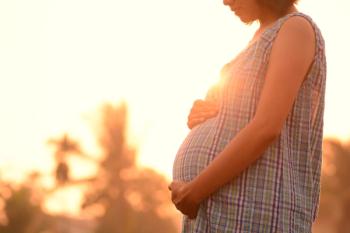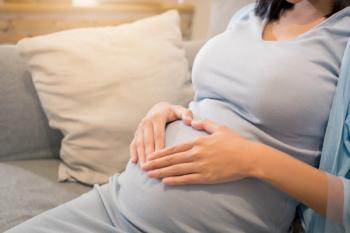
Combined therapy to prevent preterm delivery in high-risk women?
Combined rescue therapy with vaginal progesterone, cervical cerclage and the Arabin cervical pessary may have potential in pregnant women with a short cervical length and a high background risk for preterm delivery, according to new research.
Combined rescue therapy with vaginal progesterone, cervical cerclage and the Arabin cervical pessary may have potential in pregnant women with a short cervical length and a high background risk for preterm delivery. That is the conclusion of a recent retrospective cohort
“This combination may prolong their pregnancy and safely bring them near term,” said the authors. However, “additional studies are needed to confirm these preliminary findings.”
The goal of the retrospective cohort study in
During the study period, 286 pregnant women underwent vaginal ultrasonography between 15 and 29 weeks’ gestation, all with a short cervical length. Group A represented 6.3% (n = 18) of the sample size, Group B 41.9% (n = 120), Group C 31.3% (n = 38) and Group D 38.5% (n = 110).
A significantly higher portion of patients in group A had either a history of cervical incompetence (44.4% vs. 9.2% in Group B vs. 7.9% in Group C vs. 0.9% in Group D; P = 0.0001) or a cervical procedure (61.1% vs. 37.5% vs. 28.9% vs. 27.3%, respectively; P = 0.027), compared to patients in the other three groups.
However, despite Group A having a shorter cervical length at recruitment-median 14.4 mm (range 0 to 25 mm) versus 15 mm (range 0 to 25 mm) in Group B versus 15.5 mm (range 0 to 25 mm) in Group C versus 19 mm (range 2 to 25 mm) in Group C (P = .002)-the rate of spontaneous preterm delivery (< 37 week’ gestation) was similar across the four groups: 44.4% versus 32.5% versus 36.8% versus 32.7%, respectively (P = 0.665).
This finding suggests that a combined rescue therapy may have a synergistic effect in preventing preterm birth (PTB) in pregnant women with short cervical length and a high risk of PTB, as well as perhaps extending pregnancy and safely bringing these pregnancies to near term.
The mechanisms of action for cervical cerclage are unclear, but it might provide mechanical support to a weakened cervix, plus support the cervical mucosal plug as a barrier to ascending infection. The mechanism allowing a cervical pessary to help prevent PTB has also yet to be fully elucidated.
One
Furthermore, a
Newsletter
Get the latest clinical updates, case studies, and expert commentary in obstetric and gynecologic care. Sign up now to stay informed.









